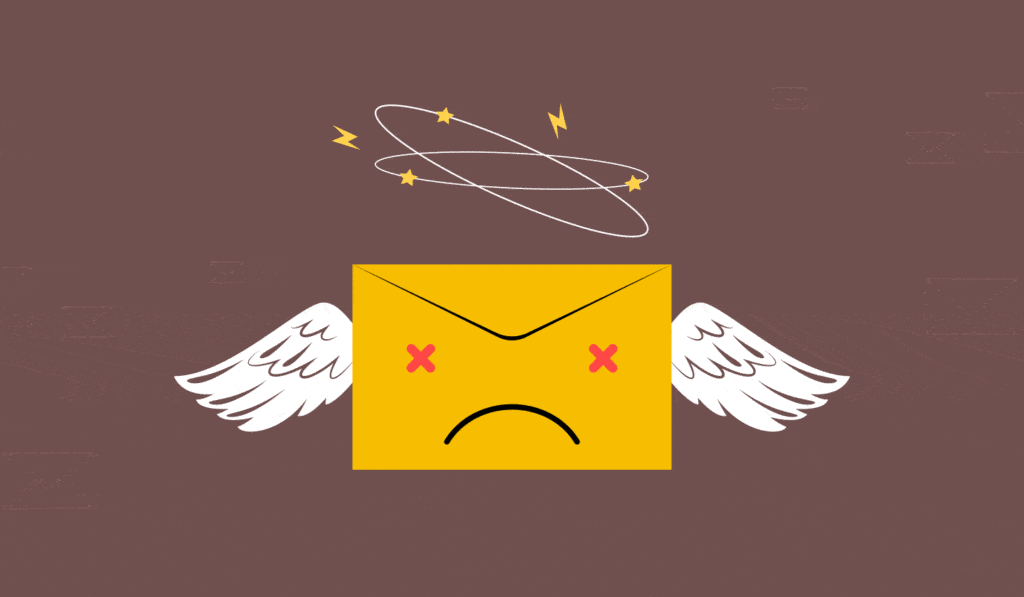Key metrics you need to measure📈
Open rate
Let’s start with the basics! How many of your potential customers are opening your emails? This is one of the most important key indicators.
Open rate is the percentage of recipients who have opened the email you sent them.
If you have a campaign of five emails, you should keep an eye on the open rate of each one and take note of what worked and what didn’t.
Keep in mind that the open rate does not define your success.
It just means that you have managed to get the attention of a small portion of your audience, specifically with the subject line of the email.
Fantastic, now you have the attention of your potential customer! 🙌
However, how many of these potential customers who open your email actually click through your campaigns to engage with you?
Click-through rate
This is quite obvious.
The CTR measures the number of clicks you have received on the CTA (call to action) you included in your email. If it’s not a button, it could be a hyperlink that you want the recipient to click on. For example, a link to a landing page, to your calendar, etc.
It is the ratio between the number of clicks on a specific link in an email and the number of times that email has been opened.
It is calculated by dividing the number of clicks by the number of impressions (opens) and multiplying the result by 100.
For example, if an email has been opened 1,000 times and generated 100 clicks, then the CTR would be 10%.

A 3% click rate is considered a solid click-through rate in the market, but this varies according to the industry and the type of email being sent (you can find statistics with a simple Google search to see what the optimal CTR is in your sector).
Conversion rate
Here I bring you my favorite indicator.
Let’s talk about how to measure the conversion rate. Yes! That important indicator that lets us know how many people are taking that action that we want so much.

Conversion rate is the percentage of your leads who take a desired action in the email you sent or on the landing page you directed them to.
It is important to note that the conversion rate can vary depending on the objective of your website and the desired action.
Therefore, it’s important that you clearly state what action you want users to take on your website before you begin.
For example, the conversion rate can be:
How many of the visitors to your landing page request a demo, how many schedule a call, how many show up to the call, how many make a purchase, etc.
To calculate this metric, you need to divide the number of people who complete the desired action by the total number of emails you’ve had to send, multiplied by 100.
Bounce rate
It’s time to talk about the hidden enemy of email marketing…the bounce rate.

The bounce rate in email marketing measures the number of emails that don’t reach the inbox of your recipient, either because the email address is incorrect or because the email has been rejected by email servers.
For example, if you sent a total of 10,000 emails and 75 of them bounced, your bounce rate is 0.75%.
And why does the bounce rate occur?
The server can reject your mail for several reasons:
- You are submitting content that looks like spam (excessive use of CAPS, punctuation, highly commercial language, or spam-triggering vocabulary). To prevent this, read Lesson #3.
- That you have sent many emails in a massive way, instead of doing it progressively. Prevention: Lesson #3.
- Many of your recipients have marked you as spam (then the servers intuit that the content of your emails is not relevant). Prevention: Lesson #5.
- Your recipient’s inbox is full (out of storage space), which is not up to you.
- You have been sending emails to invalid addresses. Prevention: Lesson #2.
As you well know, all of this points to the need for you to build your own contact list tailored to your needs using tools like MailerFind, and to ensure that your email marketing practices are healthy, as we have seen in previous lessons.
Email forwarding or email sharing rate
Have you ever wondered how to maximize the reach of your email campaigns?
The answer is simple: measuring your forwarding and shares rate.
In a sales cycle, the path to the final decision (the purchase of your product) can be more complex, with multiple players involved.
For example:
Imagine that your email has captured the attention of the initial recipient, the head of the SEO department of a company. But before making the decision to reply to your email, that person should consult with their superior. Suddenly, there are 2 people involved in making decisions!

That is, your email could be shared or forwarded several times before a real interaction is generated.
That’s why it’s important to keep this metric in mind and make sure your email reaches the right people and is valuable enough to be shared.
To calculate this, you need to divide the number of share/forward button clicks by the total number of emails delivered, multiplied by 100.
Unsubscribe rate
Unsubscribe rate is the percentage of email recipients who choose to unsubscribe from your email list.
Why is measuring the unsubscription rate so important?
Well, to begin with, it’s like knowing if your girlfriend or boyfriend is breaking up with you because they can’t stand your boring content or because you’re not putting enough effort into the relationship! 💔
Seriously, measuring the unsubscription rate is essential to understand if your content is being well received or not.
If the unsubscribe rate is very high, it is likely that something is wrong with your emails and you need to make some changes.
It can be indicative of how relevant the content of your email is or how well-segmented your list of potential customers is (i.e., knowing if you’re targeting the wrong people).
But don’t worry, it’s not the end of the world!
With this information, you can implement changes to improve your email marketing strategy and ensure that your subscribers are engaged and happy with your content.
Percentage of accounts with high and low level of engagement
How do you know which potential customers are closest to becoming your customers?
Well, the answer is simple: keep track of those who actively interact with your emails.

If you see an account that is interested in what you have to offer (opens your emails, clicks on links, replies to you…) it is likely that they are a real potential customer.
It’s important to track the potential customers who actively engage with your emails, as well as take note of those who haven’t engaged over a period of time.
Basically this helps you align and optimize your resources, time and efforts.
Instead of wasting time trying to attract someone who’s not committed (cold leads❄️), it’s a better idea to focus on nurturing those potential customers who ARE showing interest (hot leads🔥).
Return of investment (ROI)
Our dear ROI… it’s like knowing if your friend is stealing your food from the fridge or not.
This metric is essential to understand if your lead generation and email marketing strategy is generating benefits or not.
Return on investment (ROI) is calculated using this simple formula:
((amount of additional sales made – amount spent on campaign)/ amount spent on campaign)*100
If the ROI is low, something is wrong with your campaigns and you need to make some changes.
The idea is basically to calculate the amount of sales that are being generated through your email marketing campaign and get an estimate of the potential revenue that your company can generate by using this channel for business growth.
Conclusion
It is important to keep your lead generation efforts and email marketing campaigns optimized at all times.
And to do that, to make sure you’re on the right path, we’ve already seen that you need to measure your key metrics regularly.
Let the data guide the way instead of making assumptions!
…
You have reached the end of the MailerFind Guide, congratulations🙌
We hope you found a good dose of inspiration during the lessons and we are looking forward to seeing your results.
Is there anything else you would like to know or that we explain more in depth?
Ask our team using the chat at mailerfind.com. We are here to help!




0 Comments